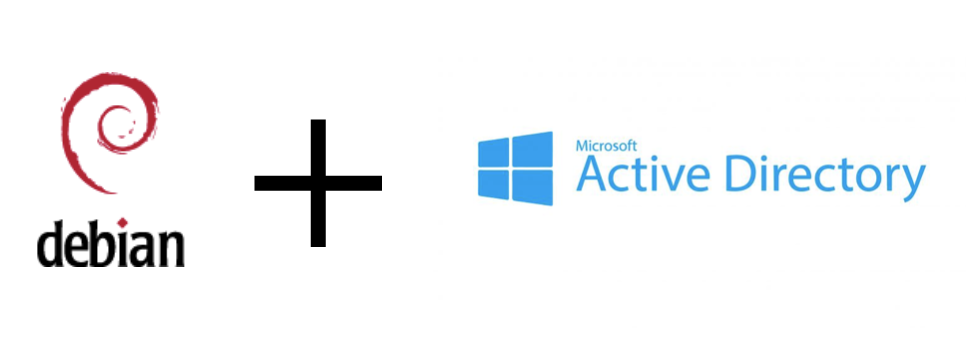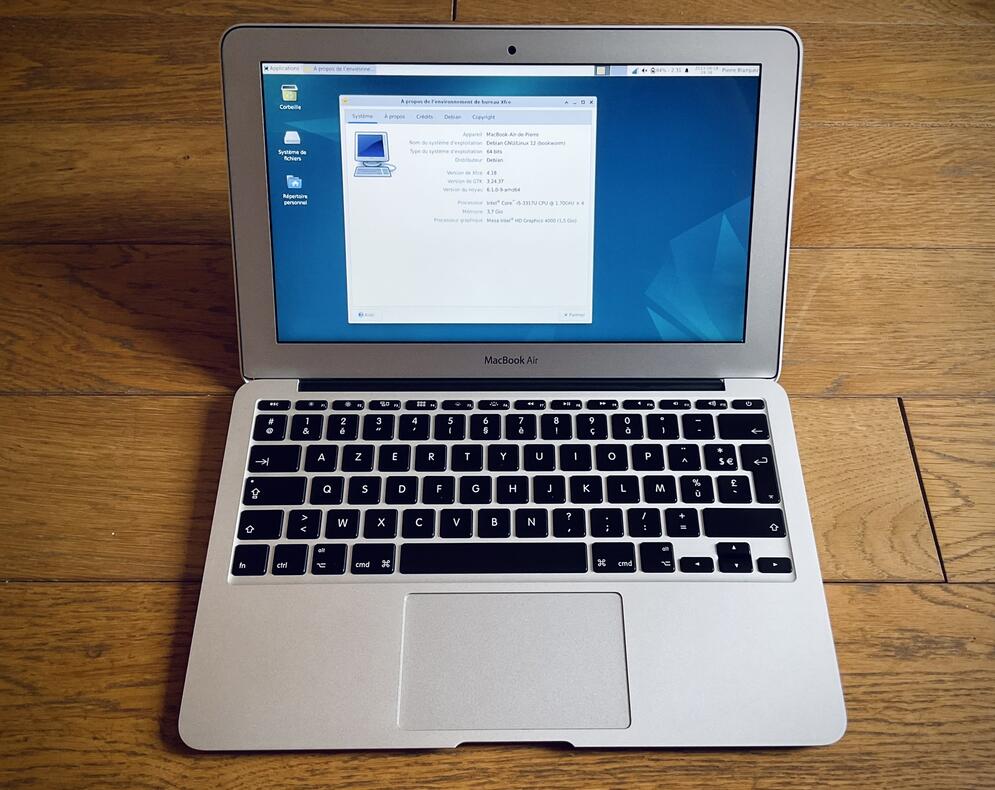What’s this about? In this post, we’ll go through the steps of getting a computer, running GNU/Linux Debian 12 “bookworm”, be a member of an Active Directory domain. Specifically, this computer will not be a server. What we’re aiming for is a workstation behaving like a Windows domain member: the end user will be able… Continue reading How-To: join Debian 12 to an Active Directory domain
Rants & Thoughts
How-To: Debian 12 on a 2015, 5K 27-inch iMac
The Computer This 5K, 27-inch, mid-2015 iMac was the subject of a previous post. Specs are: Goal is pretty simple: getting GNU/Linux Debian 12 “bookworm” to work on the iMac. And by that, I mean having working: Getting Things to Work Installation Just like for the 2012 MacBook Air, or basically any computer that’s capable… Continue reading How-To: Debian 12 on a 2015, 5K 27-inch iMac
Three Time’s Not a Charm: (an attempt at) installing a BSD on an iMac
What I Wanted Hardware I have a 27-inch, 5K Apple iMac from mid-2015 that’s out of support from the modern macOS releases. Specs are very 2015-y: The idea was pretty straightforward: having an installed Operating System that can leverage the hardware included in the Mac. For this experiment, having to install third-party, proprietary software or… Continue reading Three Time’s Not a Charm: (an attempt at) installing a BSD on an iMac
Poking around the visionOS SDK
Following the release of the very first seed of the Software Development Kit for visionOS, here’s a gathering of a few things I’ve found while quickly poking around the visionOS 1.0 Beta SDK, based on my understandings of how Apple’s systems are developed and work. TL;DR: what’s below may be inaccurate, misworded or blatantly wrong.… Continue reading Poking around the visionOS SDK
Thoughts (and a little How-To): Debian 12 on a 2012 MacBook Air
Foreword The latest pre-Gibraltar (codename for Apple computer platforms with a T1 or T2 chip) and pre-Apple Silicon Mac computers had an advantage that improved security features on the newer models severely limit (one might say prohibit, but Asahi Linux proved otherwise, and they’re doing a wonderful job): the ability to run any x64 operating… Continue reading Thoughts (and a little How-To): Debian 12 on a 2012 MacBook Air
How-To: harden Apache & PHP-FPM daemons using systemd
This How-To aims at bringing some help leveraging some systemd niceties to enforce security restrictions on daemons (or services in systemd parlance) such as Apache HTTPD and PHP-FPM. Instructions are tested on GNU/Linux Debian. They should work on any Debian-derived distribution, or with some tweaks here and there, to any GNU/Linux distribution. Explanations Wether you… Continue reading How-To: harden Apache & PHP-FPM daemons using systemd
How-To: setup Apache HTTPD as a load-balancing reverse proxy on Debian
This How-To aims at bringing some help regarding the configuration of Apache HTTPD to make it act as a reverse proxy with load-balancing capabilities. Instructions are tested on GNU/Linux Debian. They should work on any Debian-derived distribution, or with some tweaks here and there, to any GNU/Linux distribution. Explanations Reverse Proxy? While a proxy is… Continue reading How-To: setup Apache HTTPD as a load-balancing reverse proxy on Debian
How-To: setup Perdition on Debian
This How-To aims at bringing some help regarding the initial installation and configuration of Perdition. Instructions are tested on GNU/Linux Debian. They should work on any Debian-derived distribution, or with some tweaks here and there, to any GNU/Linux distribution. Warning The Perdition package from Debian 11 has a bug that prevents it from being successfully… Continue reading How-To: setup Perdition on Debian
How-To: build lighttpd for iOS on arm64
Yesterday, I tweeted this: Today, I will guide you through building lighttpd 1.4.59 (latest stable release as of writing) by cross-compiling it for iOS on the arm64 architecture from an x86_64 Macintosh. Prerequisites For this, you’ll need: Installing the required tools Fire up a Terminal and install the required tools: These are needed for the… Continue reading How-To: build lighttpd for iOS on arm64
Rétro : Power Mac G4 (PCI)
Parce que j’aime bien l’histoire de l’informatique en général et celle d’Apple en particulier, il m’arrive de récupérer d’anciens appareils (surtout des Mac) afin de les conserver et de tester des choses avec. Et donc, pourquoi ne pas faire une série d’articles “Rétro” à leur sujet ? Aujourd’hui, parlons du Power Mac G4 (graphismes PCI).… Continue reading Rétro : Power Mac G4 (PCI)



